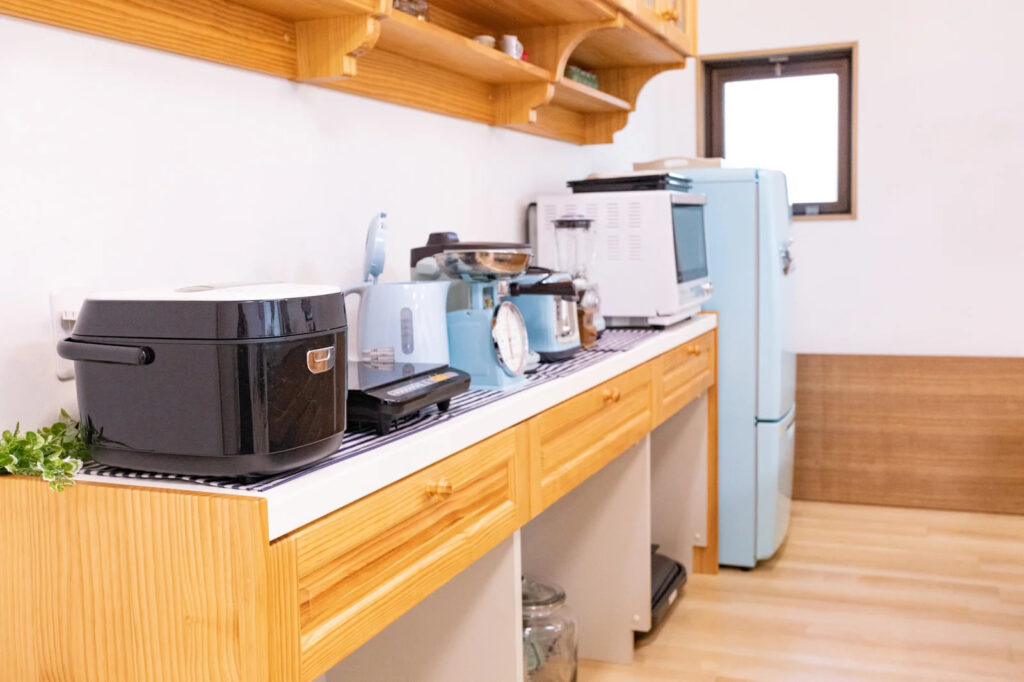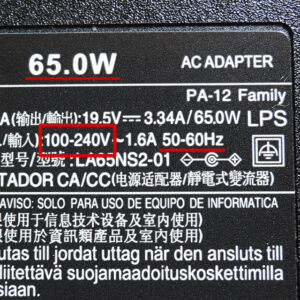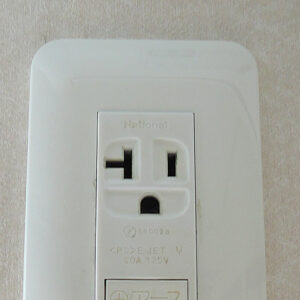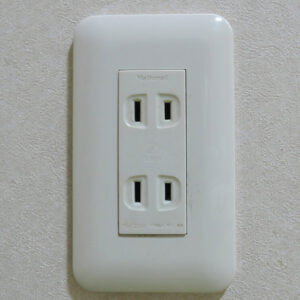When relocating to Japan, you want to bring your home appliances or purchase them in your home country if they are more affordable. However, most electrical appliances brought to Japan cannot be used as is, and many require a transformer. The power supply for homes in Japan is 100V and 50Hz/60Hz. Before using your home appliances, you need to check the voltage, power consumption, frequency, and plug type.

Use a transformer to adjust the voltage
The power supply for Japanese homes is 100V. While most home appliances used outside of Japan are for different voltages, they will need a transformer (Hen-atsuki 変圧器) to use at home in Japan. If you plug them into a 100V outlet, they will not perform as they should and may even cause damage. Home appliances that operate at different voltages must be converted from 100V to the required voltage through a transformer. For example, to use an appliance that works at 220V, you need to connect a transformer to convert the voltage from 100V to 220V. In many cases, electrical appliances outside Japan have a higher rated voltage than Japanese appliances, requiring a step-up transformer.
Check the appliance’s voltage before using a transformer
First, check the voltage of the appliance on the power rating label (a sticker showing the product specifications). For example, if the label says “220V,” the voltage is to be converted from 100V to 220V. Then, the transformer is set to the required voltage and connected between the appliance and the power outlet.
Devices with an AC adapter may not require a transformer
Laptops or low-power devices with a convertible AC adapter do not need a transformer. Just make sure to check the voltage range on the AC adapter. If it falls within the applicable range, you can use it without a transformer.

Example: A laptop AC adapter. If it says “100-240V,” it will be adaptable without a transformer. If it says “220-240V,” it will not work at 100V.
The maximum power supply of a home electrical outlet is 1500W
In Japan, the maximum power supply per 100V outlet is 1500 W. Appliances consuming more than 1500W cannot be used, even with a transformer. When checking the voltage on the rating label, make sure to check the power consumption as well. If you plan to use appliances that exceed 1500W, you will need to make adjustments such as setting up a 200V outlet, using it via a transformer, and replacing the wiring circuit breaker.
A 200V outlet may be partly provided in a room
Most Japanese households are equipped with 200V outlets for high-power appliances, like air conditioners. However, these 200V outlets are usually only available in specific areas of a room. This is why they say the standard rated voltage for homes in Japan is 100V.
Do not use appliances with different power frequencies
Always check the applicable power supply frequency on the rated label, too. Using an appliance with a different frequency can badly affect the performance and power consumption of the product. In the worst case, it will cause fire or other serious problems depending on the product.
The performance of appliances, especially those with running motors like refrigerators, washing machines, hair dryers, juicers, and humidifiers, can be affected by different frequencies. The damage by the different frequencies to these products will be noise or shortened product life. Microwave ovens cannot even be used, as the frequency will significantly affect them.
The power frequency in Japan differs by region, 50Hz in the east and 60Hz in the west
In Japan, the power supply frequency is different in two regions divided from the center of the mainland: the eastern area is 50Hz, and the western area is 60Hz. These frequency differences often cause problems when moving within Japan. For instance, when a person relocates from Osaka to Tokyo, they may discover that their microwave oven no longer works. Although recently, more appliances have been compatible with both 50-60Hz, it is still necessary to check the frequency when purchasing appliances for a move across East and West Japan.
Use a conversion plug if the outlet type differs
The outlets in Japanese housing are Type A, so if the appliance’s outlet type is different, you will need a power conversion plug. Again, remember, even if the plug type is the same, electrical appliances with different voltage and frequency cannot be used as is. Be sure to check the voltage, power consumption (under 1500W), and frequency on the rating label before plugging it into an outlet. To get compatible plugs in Japan, you may need to buy them online, as Japanese electronics stores rarely carry them.
Most Japanese homes today have 200V power outlets for air conditioners, clothes dryers, or other large power-consuming appliances. The 200V plug has a different shape to prevent insertion into a 100V outlet by mistake.

A 100V/200V compatible outlet. This outlet fits a 200V plug.
Extra info: Can I use a TV bought outside of Japan?
Unfortunately, you cannot use it as it is. Even if the voltage, frequency, and plug are adapted to Japanese power specifications, you cannot watch terrestrial Japanese TV programs due to the difference in broadcast frequency. If you want to watch Japanese TV programs, you will need to connect a TV tuner to either cable TV or an internet connection. This tuner will be used as a monitor to display external inputs. If you connect a TV tuner, you will be able to watch terrestrial digital broadcasting and BS/ CS digital broadcasting. Using a TV tuner with an Internet connection will allow you to watch TV programs not only on a TV but also on a PC and mobile phone. One thing to remember is that NHK subscription fees are charged when a TV tuner is connected. If you do not watch Japanese TV programs, you can use the TV as a monitor of a PC or a game console by connecting HDMI, etc.
Reference: Voltages and Power frequencies
| Country | Frequency | Voltage |
| Japan | 50/60Hz | 100V |
| USA | 60Hz | 120V |
| United Kingdom | 50Hz | 230V/240V |
| Australia | 50Hz | 240V/250V |
| Canada | 60Hz | 120V/240V |
| China | 50Hz | 110V/220V |
| Korea | 60Hz | 110V/220V |
| Taiwan | 60Hz | 110V/220V |
| Hong Kong S.A.R | 50Hz | 200V/220V |
| Singapore | 50Hz | 115V/230V |
| Malaysia | 50Hz | 240V |
| Thailand | 50Hz | 220V |
| India | 50Hz | 115V/230V/240V |
| Indonesia | 50Hz | 127V/220V/230V |
| Philippines | 60Hz | 120V/230V/240V |
| Viet Nam | 50Hz | 110V/220V |
| France | 50Hz | 127V/230V |
| Germany | 50Hz | 127V/230V |
| Italy | 50Hz | 125V/220V |
| Netherlands | 50Hz | 230V |
| Switzerland | 50Hz | 230V |
| Finland | 50Hz | 120V/230V |
| Norway | 50Hz | 230V |
| Portugal | 50Hz | 230V |
| Spain | 50Hz | 127V/220V |
| Sweden | 50Hz | 230V |
| Czech Republic | 50Hz | 220V |
| Israel | 50Hz | 230V |
| Brazil | 60Hz | 127V/220V |
| Mexico | 50Hz | 120V/127V/230V |
| UAE | 50Hz | 220V/240V |




